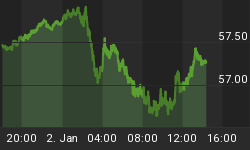The US economy added 531,000 jobs in October, beating economists’ predictions by more than 80,000 and making up for a more disappointing September.
Overall, an increase in jobs was expected for last month considering the decline in COVID-19 cases and hospitalization rates. And so far, the U.S. has recovered 18.2 million, or 81%, of the 22.4 million jobs lost during the pandemic.
In September, nonfarm payrolls rose by just 194,000, compared with the Dow Jones estimate of half million. But for October, even the industry that was hit the hardest by the pandemic--leisure and hospitality--managed to add 164,000 jobs. Struggling restaurants and bars also added 119,000 jobs, while professional and business services added 100,000 followed by manufacturing with 66,000.
Although the recovery has quickend its pace, it’s still uneven. The October job gains were led by men, particularly White and Hispanic workers, while new job rates for Black and Asian workers remained unchanged.
U.S. President Joe Biden chimed in on the jobs report, saying that it demonstrates that the economy is clearly on the rebound and that the recovery “is faster, stronger, fairer and wider than anyone could have predicted…”
“Not only are more Americans working, working Americans are seeing their paychecks go up,” he said.
But it’s still hard for some businesses to find enough labor. As a result, businesses are stepping up the competition, paying more, and dangling a variety of bonuses before potential workers. Hourly pay for the average worker rose sharply again in October, pushing the increase up to 4.6% so far this year.
However, even with the solid wage growth, inflation remains a threat.
Since taking office, President Biden has pushed several times for a minimum wage hike to $15 per hour, which represents more than a doubling of the federal minimum wage of $7.25. Even though that $15 now seems doable, it might not be enough.
The Bureau of Labor Statistics estimates that in the last three months the cost of goods and services from the consumer price index increased by 5.4%. Wage increases for workers remain disconnected and the overall consensus is that they may not be able to keep up with these rising costs.
While the price swings and increases that started in 2020 were squarely blamed on the pandemic, even though COVID-19 is somewhat in the rearview mirror, new supply crunchs largely stemming from supply chain disruptions continue to build, leading to more price increases as companies have to pay more for raw materials, and fears of shortages.
But when you take into account inflation — which is at the highest level in over a decade — wages and salaries effectively only grew by 0.6% last quarter and have actually shrunk, in terms of buying power, by 1.1% over the past 12 months.
“The tight labor market likely will create more persistent inflation than Fed officials expect,” economists at Citi Research said in a note to clients.

















